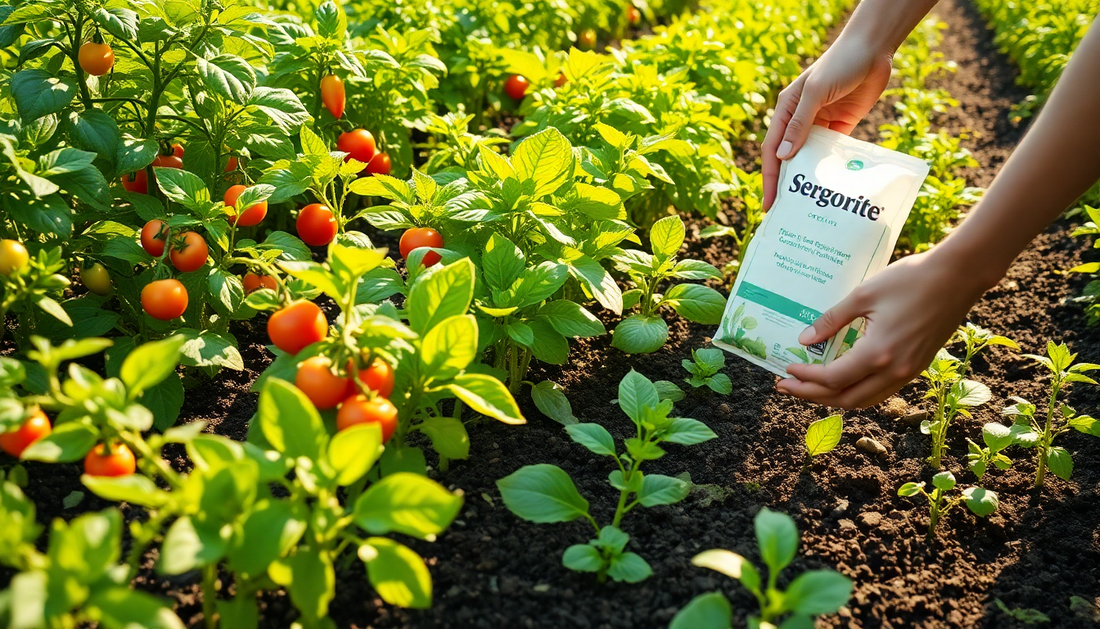
The Best Way to Fertilize Vegetables for Maximum Yield
Share
As a passionate gardener, I've always been fascinated by the art of growing healthy, bountiful vegetables. One of the most crucial aspects of this endeavor is proper fertilization. In this comprehensive blog post, I'll share my insights on the best way to fertilize vegetables for maximum yield, drawing from my own experiences and the latest research in the field.
Understanding the Importance of Soil Fertility
Healthy soil is the foundation for thriving vegetable plants. The right balance of essential nutrients, such as nitrogen, phosphorus, and potassium, is crucial for plant growth, nutrient uptake, and overall productivity. Neglecting soil fertility can lead to stunted growth, reduced yields, and even pest and disease problems.
The Role of Organic Matter
Incorporating organic matter into your soil is one of the most effective ways to improve its fertility. Compost, well-rotted manure, and other organic amendments not only provide a steady supply of nutrients but also enhance soil structure, water-holding capacity, and microbial activity. This creates an ideal environment for your vegetables to thrive.
Understanding Nutrient Needs
Different vegetables have varying nutrient requirements. For example, leafy greens like spinach and kale may need more nitrogen, while root vegetables like carrots and beets require more phosphorus. Familiarizing yourself with the specific needs of the vegetables you're growing will help you tailor your fertilization strategy for maximum results.
Developing a Comprehensive Fertilization Plan
Crafting a well-rounded fertilization plan is key to ensuring your vegetables receive the nutrients they need throughout the growing season. Let's explore the different stages of this process:
Pre-Planting Soil Preparation
Before you even sow your seeds or transplant seedlings, it's important to amend your soil with the appropriate fertilizers. This could involve incorporating compost, bone meal, or rock phosphate to build up the nutrient levels in your garden beds.
Planting-Time Fertilization
At the time of planting, you can apply a balanced, slow-release organic fertilizer or a water-soluble fertilizer to give your vegetables a nutrient-rich start. This will help them establish strong root systems and promote early growth.
Ongoing Fertilization
Throughout the growing season, you'll need to provide supplemental fertilization to maintain optimal nutrient levels. This may involve side-dressing with compost, applying foliar sprays, or using a water-soluble fertilizer during key growth stages.
Adjusting for Specific Crops
As mentioned earlier, different vegetables have unique nutrient requirements. Pay attention to the specific needs of the crops you're growing and adjust your fertilization plan accordingly. For example, tomatoes may benefit from a higher phosphorus fertilizer, while leafy greens thrive with a nitrogen-rich formula.
Organic Fertilizer Options
While synthetic fertilizers can provide a quick nutrient boost, many gardeners prefer to use organic options for a more sustainable and eco-friendly approach. Here are some of the best organic fertilizers to consider:
Compost
Homemade or store-bought compost is an excellent source of a wide range of essential nutrients. It also improves soil structure and water-holding capacity, making it a versatile and valuable addition to your garden.
Manure
Well-aged manure from livestock, such as cow, horse, or chicken, can be a fantastic organic fertilizer. It provides a balanced blend of nutrients and helps build soil organic matter.
Bone Meal
Bone meal is a great source of phosphorus, which is crucial for root development and overall plant health. It's particularly beneficial for root crops and fruiting vegetables.
Seaweed Extracts
Liquid seaweed extracts are rich in micronutrients and can be used as a foliar spray or soil drench to provide a nutrient boost to your plants.
Cover Crops
Growing cover crops, such as legumes or grasses, can help fix nitrogen in the soil and improve overall soil fertility. Incorporating these crops into your rotation can be a game-changer for your vegetable garden.
Maximizing Nutrient Uptake
Proper fertilization is only half the battle; ensuring your vegetables can effectively absorb the nutrients is equally important. Here are some tips to help your plants make the most of the fertilizers you apply:
Soil pH Management
Maintaining the optimal soil pH range (typically between 6.0 and 7.0) is crucial for nutrient availability and uptake. Regularly testing your soil and making adjustments as needed can make a significant difference in your vegetable yields.
Irrigation Practices
Proper watering is essential for nutrient transport and uptake. Avoid over-watering or letting your soil become too dry, as both can hinder nutrient absorption.
Microbial Inoculation
Introducing beneficial soil microorganisms, such as mycorrhizal fungi or nitrogen-fixing bacteria, can enhance nutrient cycling and availability for your plants.
Foliar Feeding
In addition to soil-applied fertilizers, foliar feeding with nutrient-rich sprays can provide a quick boost of essential elements directly to the leaves, where they can be rapidly absorbed.
Putting It All Together
Developing a comprehensive fertilization plan for your vegetable garden requires a holistic approach that considers soil health, nutrient needs, and optimal growing conditions. By following the strategies outlined in this blog post, you'll be well on your way to achieving bountiful harvests and maximizing the productivity of your vegetable garden.
Remember, every garden is unique, so be prepared to experiment and fine-tune your fertilization practices to find what works best for your specific growing conditions. With patience, dedication, and a deep understanding of your plants' needs, you can unlock the full potential of your vegetable garden and enjoy the fruits (or vegetables) of your labor.
Happy gardening!
